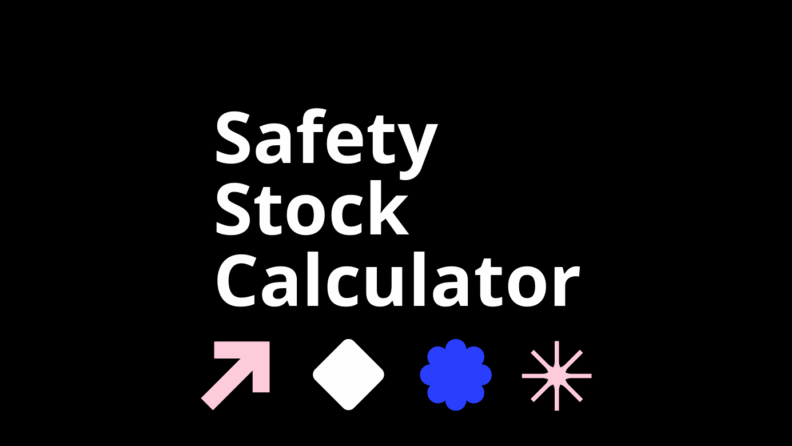Stockouts drain revenue and wreck shopper trust. Pop your numbers into the tool below and, in seconds, you’ll see the exact cushion you need to keep shelves full.
No spreadsheets, no guesswork—just a hard number you can act on.
How to Use This Safety Stock Calculator
- Enter your average daily usage (units per day).
- Enter your lead time in days.
- (Optional) Toggle on Add demand and lead time variability to factor in fluctuations.
- If variability is enabled, enter your demand variability (standard deviation) and lead time variability.
- Click Calculate Safety Stock. We crunch the math and spit out your number.
- Copy the result into your inventory system—or, better yet, set it as a dynamic buffer in your inventory management software.
Safety Stock Formula Explained
Safety Stock = z × σ × √LT
- z. Service level factor pulled from a normal‑distribution table (e.g., 1.65 for 95%).
- σ. Standard deviation of demand during lead time.
- LT. Lead time in days.
The higher the service level or variability, the bigger the buffer. Dial them back and the pillow shrinks—along with holding costs. To learn more about safety stock calculations, we go in-depth on it in our big guide on how to calculate safety stock.
Safety Stock Example
Your organic coffee beans move 100 bags a day. Lead time from the roaster is 10 days. Demand bounces around with a 15‑bag standard deviation. You want 95% availability.
| Variable | Value |
|---|---|
| z (95% SL) | 1.65 |
| σ | 15 |
| √LT | 3.16 |
| Safety Stock | ≈ 78 bags |
Seventy‑eight extra bags keep you selling while the next shipment rolls in.
Pro Tips to Reduce Stockouts
Nobody likes an out-of-stock sign. Customers, merchants, suppliers—it ain't cute for anyone along the chain. So, let's try to avoid stockouts with a few smart and simple strategies:
- Track demand volatility weekly. Fresh data means tighter buffers and less cash tied up.
- Shorten lead times where possible. Faster suppliers shrink the square‑root term and your safety stock.
- Segment by SKU criticality. Essentials deserve higher service levels; slow movers don’t.
- Automate reorder points. Pair this safety stock with our Reorder Point Calculator so the system orders before you dip into the buffer.
Stock Up on Success
Hopefully, our humble calculator has helped you out in a pinch today. For regular and consistent calculation of safety stock and all the other VIP inventory metrics, choose great software that automates all that math for you. For example:
- Inventory optimization software
- Inventory replenishment software
- Ecommerce inventory management software
Retail never stands still—and neither should you. Subscribe to our newsletter for the latest insights, strategies, and career resources from top retail leaders shaping the industry.


